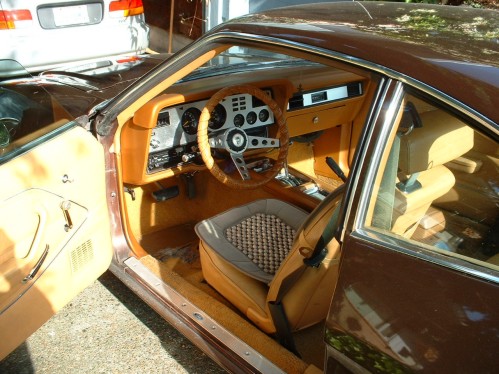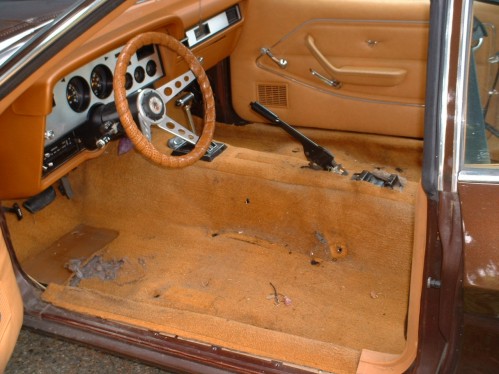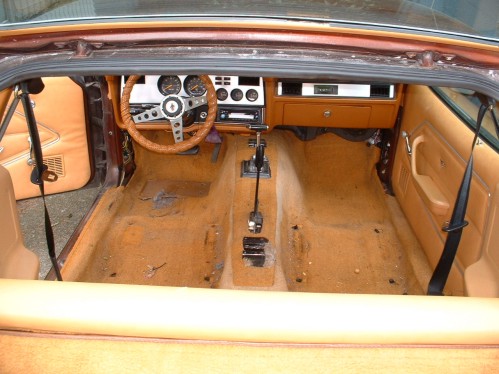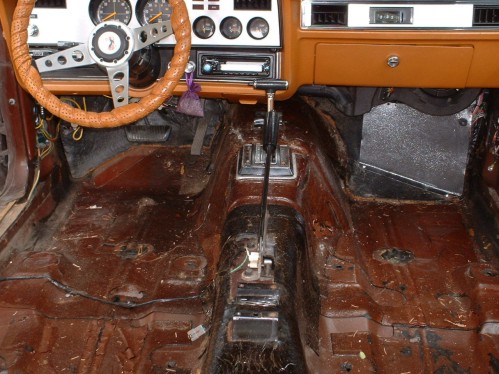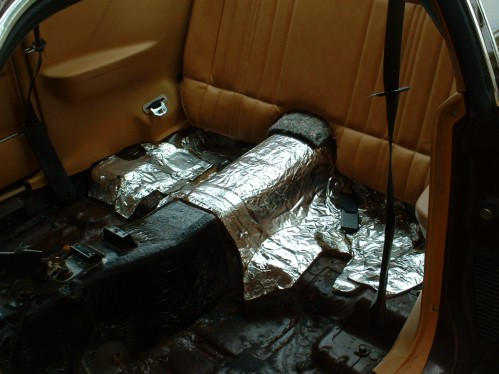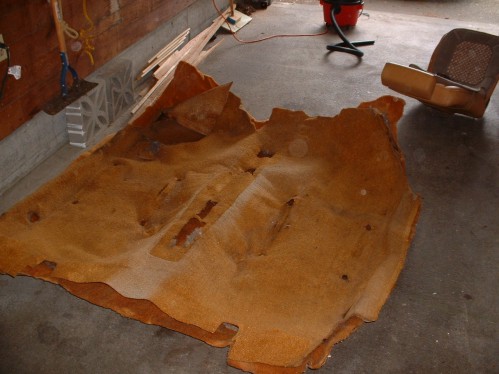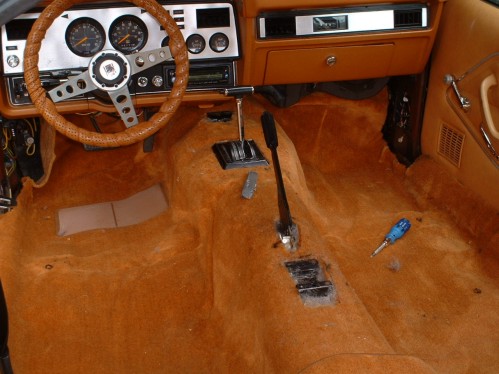And now. . . .the news from the EEFPress report: "Archaeological Find in Southern Sinai"
http://www.ansamed.info/en/egypt/news/ME03.@AM12580.html"Egyptian archeologists have uncovered a 2200-year old
port in the Red Sea city of Dahab (..) At another section
of the port, archaeologists found what looks to have
been 24 storage rooms."
-- Another press report, with the same scanty details:
http://snipurl.com/1k30e[http://www.sis.gov.eg/En/EgyptOnline/Culture/000001/
0203000000000000000750.htm]
Press report: "Prehistoric stones unearthed in Aswan"
http://snipurl.com/1k30k[http://www.sis.gov.eg/En/EgyptOnline/Culture/000001/02030000
00000000000749.htm]
"An archaeological team from Belgium, working in the Upper
Egyptian town of Kom Ombo, near Aswan, have unearthed
three stones engraved with inscriptions 15,000 years ago.
"There are engravings of cows, hippopotami, giraffes and fish
on the stones, as well as other symbolic and abstract inscriptions"."
[INSCRIPTIONS FROM 15,000 YEARS AGO??? Ed.]
Press report: "A pictorial dream: ‘Saqqara Under Sand’
will tour the world"
http://www.dailystaregypt.com/article.aspx?ArticleID=7104"In cooperation with the Cultural Development Fund, the
Alexandria Library, the Ars Latina Society and the Louvre
Museum's Egyptian Antiquities Department, "Saqara Under
Sand" that was staged in Jan. 2007 at the Alexandria Library
and last month at the French Cultural Center, Cairo, is currently
on at Prince Taz Palace. However, due to the significance of
the exhibition that showcases the fruit of 16-years' excavations
conducted by the Louvre's French archaeological team, "Saqara
Under Sand" is scheduled to tour the US as well as many Arab
countries and South America."
Press report: "Spanish museum said to be exhibiting stolen
Egyptian antiquity"
http://snipurl.com/1k30w[http://www.iht.com/articles/ap/2007/05/09/europe/EU-
GEN-Spain-Egyptian-Statuette.php]
"The limestone artwork — a 43-centimeter-tall (17-inch)
depiction of a princess named Nefert — is on display at the
Egypt Museum of Barcelona, which says it will return the
piece if it turns out to have been stolen (..) before being
purchased legally by the museum."
Trivia in the category of the more bizarre kind of 'Egyptomania'
(if not plain 'maniacal'):
1) Press reports: "Egyptian goddess inspires a psychedelic
burst of Czech creativity"
http://snipurl.com/1k31d[http://www.praguepost.com/articles/2007/05/02/bromovas-
magic-mushroom-temple.php]
http://www.expats.cz/prague/event.php?id=4684
"Bromová's (..) current exhibition at Hunt Kastner Artworks
[till May 22], “HaHathor’s Handbag,” was inspired by her
travels in Egypt, and in particular by the mythical goddess Hathor.
In 2003 Bromová (born in Prague in 1966) was traveling around
Egypt, where, at the ancient temple of Dender[a], she was struck
by the visual and spiritual mystery of Hathor (..). There was a
relief on a stone that especially captivated her: It showed a
woman carrying something resembling an amphora, but of
an unusual shape — it resembled a woman’s handbag, and
looked as if it had mushrooms sprouting out of its sides. This
image became the basis of five digitally manipulated psychedelic
self-portraits, or inner journeys."
-- Exhibition photos [not really 18+ rated]:
http://snipurl.com/1k31fPress report: "Egyptians, not Greeks were true fathers of medicine"
http://www.eurekalert.org/pub_releases/2007-05/uom-eng050907.php"The research team from the KNH Centre for Biomedical Egyptology
at The University of Manchester discovered the evidence in medical
papyri written in 1,500BC – 1,000 years before Hippocrates was born.
"When we compared the ancient remedies against modern pharmaceutical
protocols and standards, we found the prescriptions in the ancient
documents not only compared with pharmaceutical preparations of
today but that many of the remedies had therapeutic merit." "
[For this project, see also EEF NEWS (447) and (443).]
-- Another press report on this:
http://snipurl.com/1k31k[http://www.manchestereveningnews.co.uk/news/s/1006/
1006599_egypt_was_mummy_of_medicine_.html]
Press report: "French theory on Pyramids building refuted"
http://snipurl.com/1k321[http://www.sis.gov.eg/En/EgyptOnline/Culture/000001/02030
00000000000000755.htm]
"Egyptian, US and German experts have refuted French archaeologist
Jean-Pierre Houdin's theory about how the Pyramids were built."
[According to the Egyptian Gazette, Mark Lehner and Rainer
Stadelman. were two of the experts.]
Abdel-Hafez, Tarek Mahmoud Mohamed, Geophysical
and geotechnical studies in pharaonic and urban Egypt.
Diss. phil.nat. Bern, 2004
abstract:
http://www.zb.unibe.ch/download/eldiss/04abdel-hafez_tabs.pdf"(..) Geophysical, geotechnical and geochemical investigations
in the urban center of 15th May City and Al-Mokattam area in
great Cairo and in the Osireion of Abydos. Ground penetrating
radar (GPR) with 100 MHz antenna was applied in both areas.
In Abydos the radargrams show a channel underneath the
Temple of Seti I. (..)"
text: 7,57 MB
http://www.zb.unibe.ch/download/eldiss/04abdel-hafez_t.pdf-- Gerber, Manuel, Predictive site detection and reconstruction:
a data-driven approach to the detection, analysis, reconstruction
and excavation of ancient Near Eastern monumental architecture
Diss. phil.hist. Bern, 2003
abstract:
http://www.zb.unibe.ch/download/eldiss/03gerber_mabs.pdftext: 11,4 MB
http://www.zb.unibe.ch/download/eldiss/03gerber_m.pdfDigitized book from the Internet Archive
-- E. A. Wallis Budge, A Guide to the Egyptian Collections in
the British Museum, Printed by Order of the Trustees, [London],
1909. xiv, 325 pp., 53 pls. - pdf-file (245 MB)
http://www.archive.org/details/guidetoegyptianc00brituoft"The Collection of Egyptian Antiquities in the British Museum
comprises nearly fifty thousand objects, and many of its sections
are unrivalled in completeness ... The present Guide has been
prepared with the view of providing the visitor to the British
Museum with information of a more general character than can
be conveniently given in the Guides to the several Galleries and
Rooms of the Department. An attempt has here been made to
present a sketch of the origin, the manners and customs, the
language, the writing, the literature, the religion, and the burial
rites of the peoples of Egypt, and of their history under the
successive dynasties; embodying references to the several
objects of the Collection which illustrate the different branches
of the subject. The text is supplemented by an abundant selection
of cuts and plates of the most important of the antiquities."
Anthony J. Cagle, "Human Burials at Kom el-Hisn" (2004),
15 pp. (PDF, 107 kB)
http://www.acagle.net/KeHBurials.pdf [Hey, I didn't know that was there. . .Ed.]
-- The dissertation of the author was mentioned in EEF NEWS (359):
Anthony J. Cagle, The Spatial Structure of Kom el-Hisn: An Old
Kingdom Town in the Western Nile Delta, Egypt. Online at:
http://www.acagle.net/dissertation/disspage.html
-- Some other online material on the author's site:
---"University of Washington 1994 Fayum Project. NARCE Report"
http://www.acagle.net/fayum94/narce.html
"The purpose of this research was to study certain aspects
of artifact variability during the so-called "Epipaleolithic-
Neolithic transition" in the Fayum region of Egypt."
http://www.acagle.net/fayum94/narce.html:
--- "Differential Consumption of Pig vs. Sheep/Goats at the
Old Kingdom Site of Kom el-Hisn"
http://www.acagle.net/ARCE2002/PigPaper2Refs.html
"Recently, I performed an extensive spatial analysis of the
material recovered from two seasons, 1986 and 1988 and
I was able to clarify the structure and function of a good
portion of the excavated areas. This paper deals with one
aspect of that structure, the differential distribution of faunal
remains and its implications for social differences in subsistence;
namely, the role of pig versus sheep/goat in the diet of different
segments of Kom el-Hisn’s residents."
--- "Kom el-Hisn monograph: Tentative Table of Contents"
http://www.acagle.net/kehmonograph/toc.html
Some sections are online.
End of EEF news






